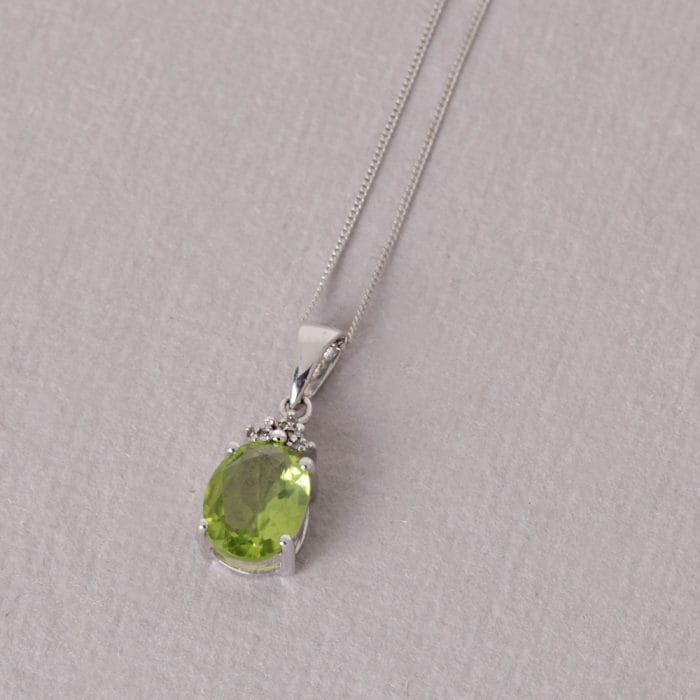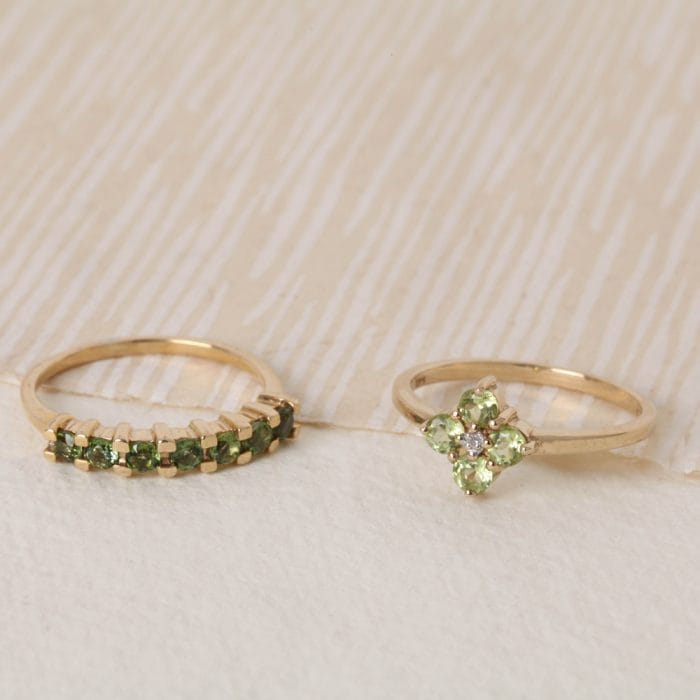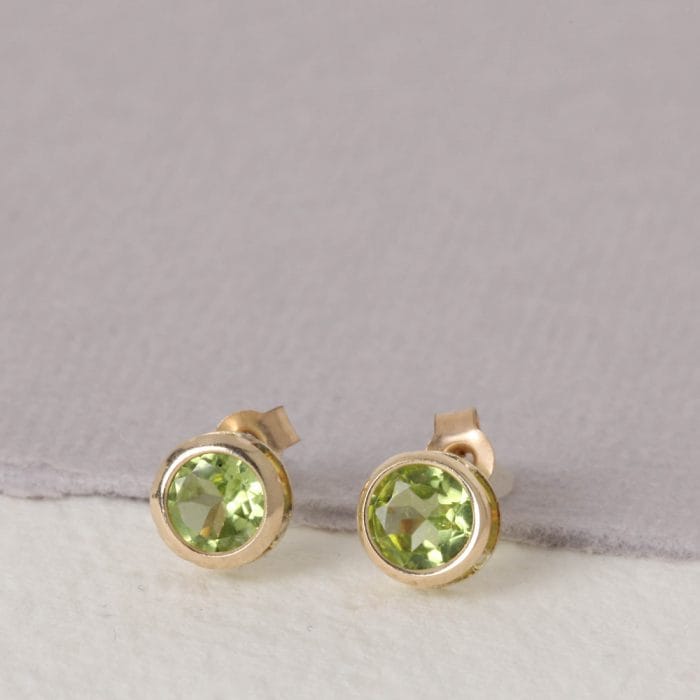Peridot has always been associated with light and is known as the "gemstone of the Sun" in Egypt. Some people even believed that it protects the owner from nightmares especially when it was set in gold as this exerts its full potential.
The word peridot comes from the Arabic "faridat" which translates to "gem". Peridot's history is different from almost all other gems. Most gems are formed in the Earth's crust, however, there are two exceptions...diamond and peridot which are formed much deeper in the earth, in the mantle. Peridot is created in the upper mantle which is approximately 20 to 55 miles deep. It is brought to the surface by tectonic or volcanic activity. Some also arrived on earth in meteorites, but this variation of peridot is very rare and is not likely to be sold in a high street jewellery shop.
Very early records suggest that ancient Egyptians mined a beautiful green gemstone on an island in the Red Sea called Topazios, which is now known as St John's Island. Legend has it that the island was badly infested with snakes which made mining highly unpleasant until a Pharaoh came and drove them into the sea. People have often confused this stone with other gems such as "topaz". Peridot has been mined on the island for over 3,500 years. At one point, the exact location of the island was lost for several centuries and was only rediscovered in 1905. The tiny island, which is often covered in fog, is located around 35 miles off the Egyptian coastal port of Berenica.
Mining ended on St Johns Island around the time of World War II. Today, there are five major sources of Peridot. The finest pieces come from Burma, and new material from Pakistan has created a lot of excitement in the gemstone industry. For commercially graded Peridot, Arizona and New Mexico are important producers and Vietnam and China have become important suppliers too over the years.
Some historians believe that Cleopatra's famous emerald collection might have been peridot. Many people in medieval times continued to confuse peridot with emerald. For centuries people believed that the striking 200ct gemstones on the shrine of the Three Holy Kings in Germany's Cologne Cathedral were emeralds, however, they were in fact peridots.
Peridot is one of the few gemstones that only exists in one colour, a very distinctive lime green. In ancient times it was believed that Peridot was a gift of Mother Nature to celebrate the annual creation of a new world.
The gemstone shade depends on the percentage of iron that is contained in the crystal structure so the colour can vary from yellowish green to brown, however, the lime and olive green shades are the most desirable. If you are someone that is into earth tones, Peridot should definitely be in your jewellery collection. Shop peridot jewellery here















